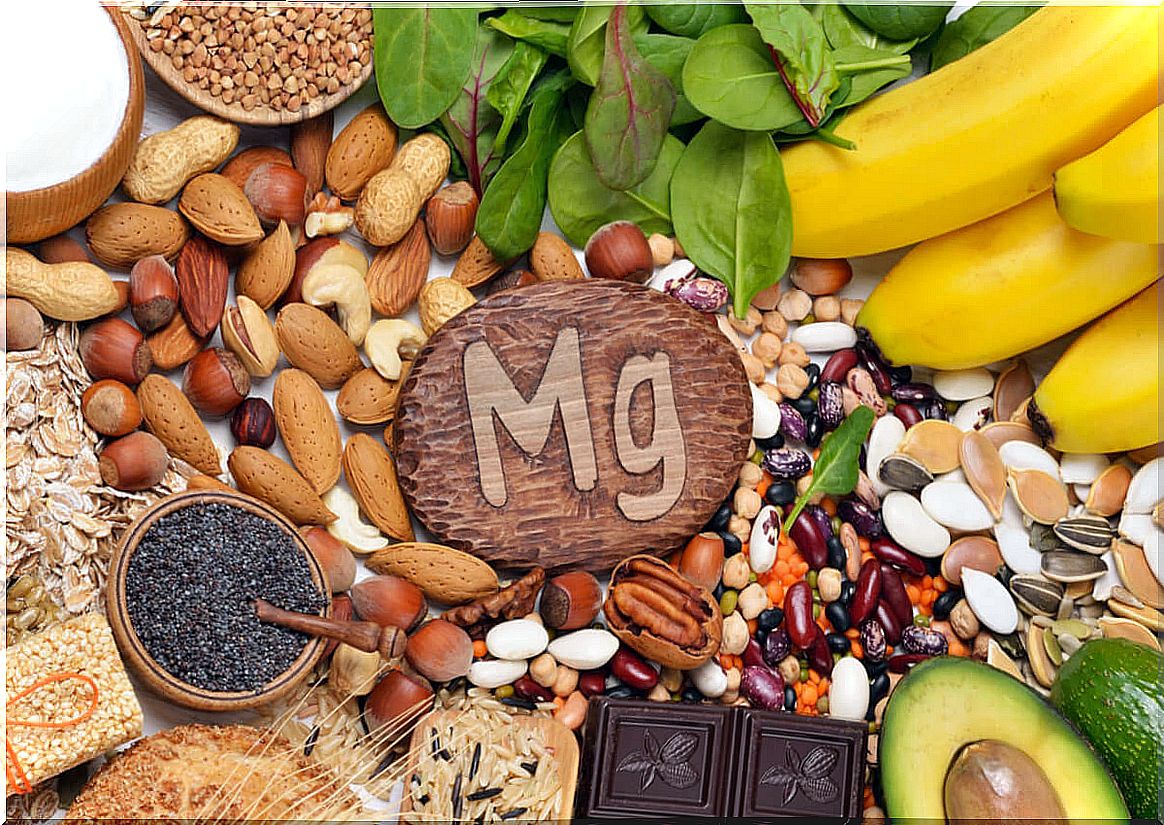6 Foods To Increase Magnesium In The Diet
The low absorption of magnesium is linked to the continuous appearance of discomfort and the development of some diseases. It is important to know the foods that provide it to include it more frequently in the diet.

Magnesium is one of the minerals that the body requires to function in optimal conditions. Its low consumption or low absorption is linked to the appearance of a wide variety of ailments and diseases. For this reason we must increase magnesium in the diet.
Currently it can be purchased in supplements, since it is difficult to obtain the recommended daily amounts. However, it is advised that its main source is food, since it is the best way to enjoy its health benefits.
Why is it so important to ingest it? What are the foods that contain it? It is essential that all resolve these questions. Therefore, below we want to share in detail its functions and main sources.
Why is it important to increase magnesium in the diet?
Adequate absorption of magnesium is essential for many vital functions of the body to be activated. In fact, it is estimated that it interferes in at least 300 biochemical reactions, among which muscle and nerve health stand out. It has been shown that this mineral is essential to guarantee a correct rest.
The importance of increasing your intake in the diet lies not only in the functions it performs, but also in the difficulties in obtaining the correct dose. And, although it is present in many foods, its assimilation is usually minimal.

Benefits of increasing magnesium in the diet
Getting an adequate amount of this mineral has a positive impact on physical and mental health. For that reason, there are many other reasons to increase magnesium in the diet. Let’s see the most important:
- Reduces muscle and joint pain.
- Improves bone and dental health.
- Protects the skin against allergies.
- Improves blood circulation.
- Reduces stress and improves quality of sleep.
- It favors the control of diabetes.
- Strengthens the immune system.
- Regulates the activity of hormones.
- Balances the activity of the nervous system and brain.
- Calms inflammation and digestive pain.
- Avoid recurring headaches.
- Reduces the risk of depression, according to a study published in Magnesium Research .
Foods to increase magnesium in the diet
The inclusion of some foods rich in magnesium in the diet is the best way to obtain the benefits that this mineral provides. However, considering that its absorption can be difficult, it is also valid to use lotions or supplements.
1. Green leafy vegetables

In the group of foods to increase magnesium in the diet, green leafy vegetables stand out. Most of its varieties provide a significant amount, in exchange for very few calories. Let’s see the healthiest:
Amount per 100 gram serving:
- Spinach: up to 79 milligrams of magnesium.
- Kale: 47 milligrams of magnesium.
- Broccoli: 22 milligrams of magnesium.
- Arugula: approximately 47 milligrams of magnesium.
2. Cocoa powder
A one-ounce serving (28 grams of cocoa) can provide up to 64 milligrams of magnesium. Among other things, it is a food rich in antioxidants, iron and probiotic substances that can help to “feed” the healthy bacteria in the intestine.
Remember that cocoa flavonoids are capable of improving the functioning of the cardiovascular system, according to a study published in The Cochrane Database of Systematic Reviews .
3. Avocados
Half an avocado contains up to 58 milligrams of magnesium. Although its calories are a little higher than those of other foods, it also provides essential fatty acids, vitamin E and other minerals that are key to taking care of health.
4. Nuts

Considered one of the healthiest snacks in the diet, nuts are one of the main natural sources of magnesium. Its quantity may be different in each variety, but they are all very healthy.
Amount of magnesium per 100 grams:
- Cashews: 236 milligrams.
- Almonds: 258 milligrams.
- Hazelnuts: 236 milligrams.
- Walnuts: 159 milligrams.
5. Seeds
Along with nuts, seeds stand out as rich sources of magnesium. They are ideal to curb the feeling of anxiety about food and, incidentally, improve digestion. They also provide omega 3, vitamin E and antioxidant compounds.
Amount of magnesium per 100 gram serving:
- Pumpkin seeds: 535 milligrams.
- Flaxseed: 392 milligrams.
- Sesame: 346 milligrams.
- Sunflower: 387 milligrams.
- Quinoa: 210 milligrams.
6. Fatty fish
There are many meal plans that suggest consuming fatty fish at least twice a week. This is because they contain omega 3, amino acids, and significant amounts of magnesium and other minerals.
A 178-gram serving of salmon can provide up to 53 milligrams of magnesium, that is, 13% of the recommended daily amount. It can also be obtained significantly from other varieties of fish such as sardines, tuna or mackerel.
What is the recommended daily amount of magnesium?
Magnesium needs change according to the stages that the person goes through. Thus, an adult woman requires about 260 milligrams a day. For their part, men need between 300 and 350 milligrams a day.
Do you have weakness, muscle weakness or continuous discomfort? Maybe you need an extra dose of magnesium. Therefore, try to incorporate the mentioned foods into your regular diet.









